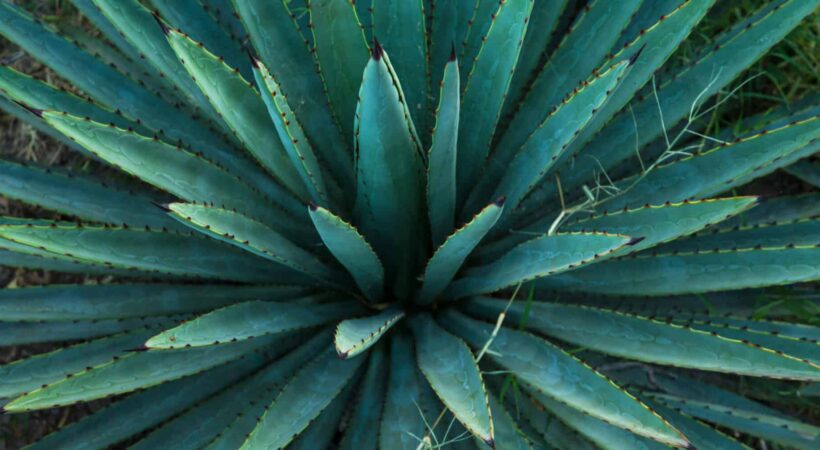The main point to understanding a good Mezcal is in the agave. Mexico is not only the country of cacti (it has almost half of the species in the world), it is also the country of magueys or agaves, from which fermented beverages such as aguamiel and pulque are extracted; also mezcal, tequila, or cocuy liquor.
The word mezcal comes from the Nahuatl metl: maguey, calli: cooked, and means cooked maguey. Mezcals are part of Mexican culture and their flavor is the result of the species of maguey used, the terroir, the fermentation process, the distillation technique, and the recipient in which it is contained.
Learn about the types of agave contained in the Mezcals we offer at La Vicenta:
Agave Espadín
Its name is due to the thin and long stalks that resemble swords. The largest production of Mezcal in the country is made with this agave, the ancestor of the blue maguey tequilero and henequen.
This agave has fruity, sweet tones and a slight coconut flavor, followed by tones of herbs and spices.
Tobalá Agave
This type of agave is characteristic of the interior and dry parts of the Sierra Madre del Sur and Sierras de Oaxaca. It is a wild maguey that grows in mountainous terrain, and poor and stony soils. These characteristics are what give it its wood, straw, wild herbs, and sweet tones.
Agave Cupreata or Papalote
The Agave Cupreata or Papalote is a plant of the Asparagaceae family. It is endemic to Guerrero and Michoacán in Mexico. Its outstanding characteristic is its copper-colored spines.
Mezcals made with Agave Cupreata have pleasant aromas, with notes of ripe fruit, orange blossom, and low-intensity smoke. Its flavor is smooth, unctuous (finely oily), with interesting bitter cocoa flavors.
Sierra Negra Agave
This plant takes up to 25 years to mature. It has limited production by offshoots or by seed; because of this, the production of blends is quite restricted. Its broad leaves measure 20 to 30 centimeters. It has smoky notes on the nose and leaves a fruity aftertaste in the mouth. It is par excellence one of the most special mezcals of Oaxaca.
Agave Cenizo from Durango
Is a plant of the agave family (Asparagaceae) from the region of Durango, Mexico. It is one of the medium-sized magueys, its rosettes measure almost one meter. Its leaves are rough and have the appearance of being covered with wax and flattened teeth.
As a separate mention, there are the Mezcales made with Agaves Ensemble, which means that its distillation process does not originate from a single agave, but from more than 2 agaves.
Remember that at La Vicenta all drinks are doubles every day, all day long.
Now it’s time to go to La Vicenta for some mezcals.
